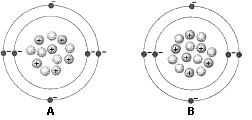Which of the following statements accurately describes transcription by RNA polymerase?
A. RNA polymerase simultaneously transcribes both strands of DNA
B. It is possible for one RNA polymerase to transcribe one strand of DNA in the 5’ to 3’ direction and another RNA polymerase to transcribe the complimentary strand of DNA in the 3’ to 5’ direction, producing two identical transcripts
C. It is possible for one RNA polymerase to transcribe one strand of DNA in the 5’ to 3’ direction and another RNA polymerase to transcribe the complimentary strand of DNA in the 5’ to 3’ direction, producing two identical transcripts
D. It is possible for one RNA polymerase to transcribe one strand of DNA in the 5’ to 3’ direction and another RNA polymerase to transcribe the complimentary strand of DNA in the 3’ to 5’ direction, producing two different transcripts
E. It is possible for one RNA polymerase to transcribe one strand of DNA in the 5’ to 3’ direction and another RNA polymerase to transcribe the complimentary strand of DNA in the 5’ to 3’ direction, producing two different transcripts
E. It is possible for one RNA polymerase to transcribe one strand of DNA in the 5’ to 3’ direction and another RNA polymerase to transcribe the complimentary strand of DNA in the 5’ to 3’ direction, producing two different transcripts
You might also like to view...
Which of the following describes the purpose of the polymerase chain reaction?
a. increasing the number of copies of DNA b. separating charged molecules by size and charge c. opening cells to extract DNA in a gelatinous mass d. cutting DNA sequences in a predictable manner
With increasing forest area in a patch, what is more likely to occur?
A) interior species B) edge species C) boundary species D) area-insensitive species
Figure 2-1 represents:

a. two isotopes of the same element.
b. two different elements.
c. two different ions.
d. an acid and a base.
e. a cation and an anion.
You walk down into your basement to find that the carpeting on the floor is damp. Concerned, you look around for large puddles of water or broken pipes, but find none. In fact, only the basement floor and carpeting is damp. You realize that water must have wicked into the carpet from the floor by ________.
A. adhesion and solubility B. adhesion, cohesion, and solubility C. cohesion and solubility D. adhesion and cohesion